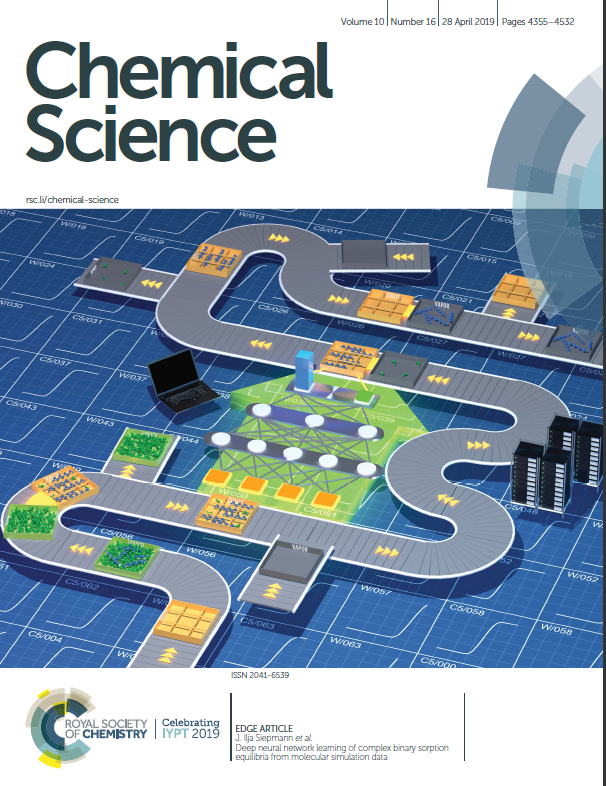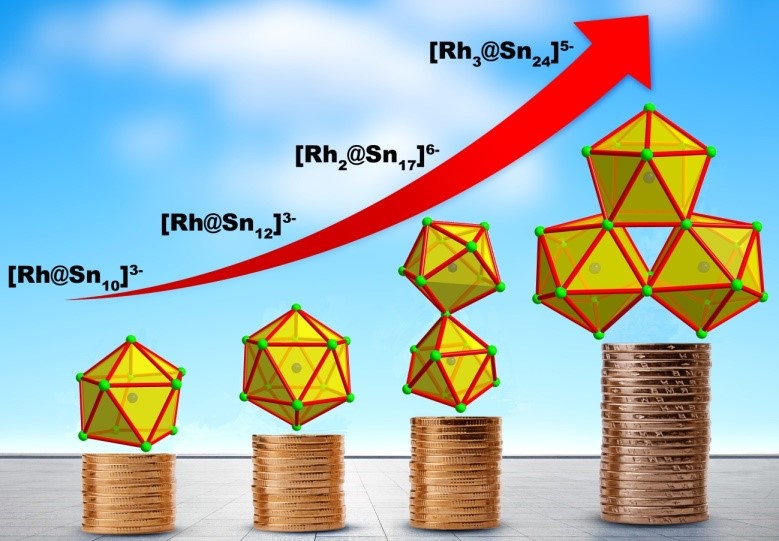
Chao Liu, Xiao Jin, Lei-Jiao Li, Jun Xu, John E. McGrady * and Zhong-Ming Sun *
Chem. Sci. 2019, 10, 4394-4401 [ pdf ]

Abstract:Through relatively subtle changes in reaction conditions, we have been able to isolate four distinct Rh/Sn cluster compounds, [[Rh@Sn10]3–, [Rh@Sn12]3–, [Rh2@Sn17]6– and [Rh3@Sn24]5–, from the reaction of K4Sn9 with [(COE)2Rh(μ-Cl)]2(COE = cyclooctene). The last of these has a hitherto unknown molecular topology, an edge-fused polyhedron containing three Rh@Sn10 subunits, and represents the largest endohedral Group 14 Zintl cluster yet to have been isolated from solution. DFT has been used to place these new species in the context of known cluster chemistry. ESI-MS experiments on the reaction mixtures reveal the ubiquitous presence of {RhSn8} fragments that may play a role in cluster growth.
